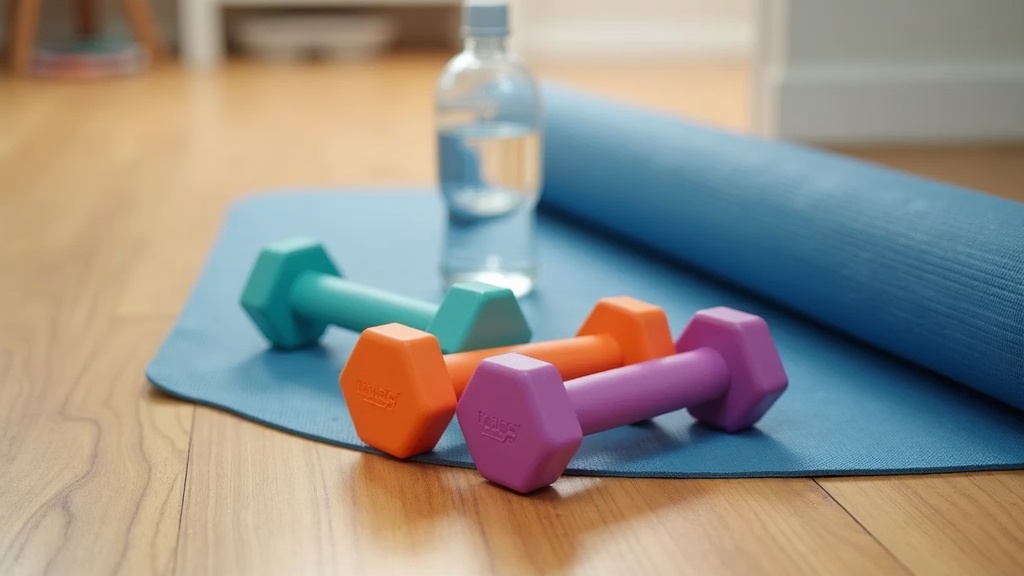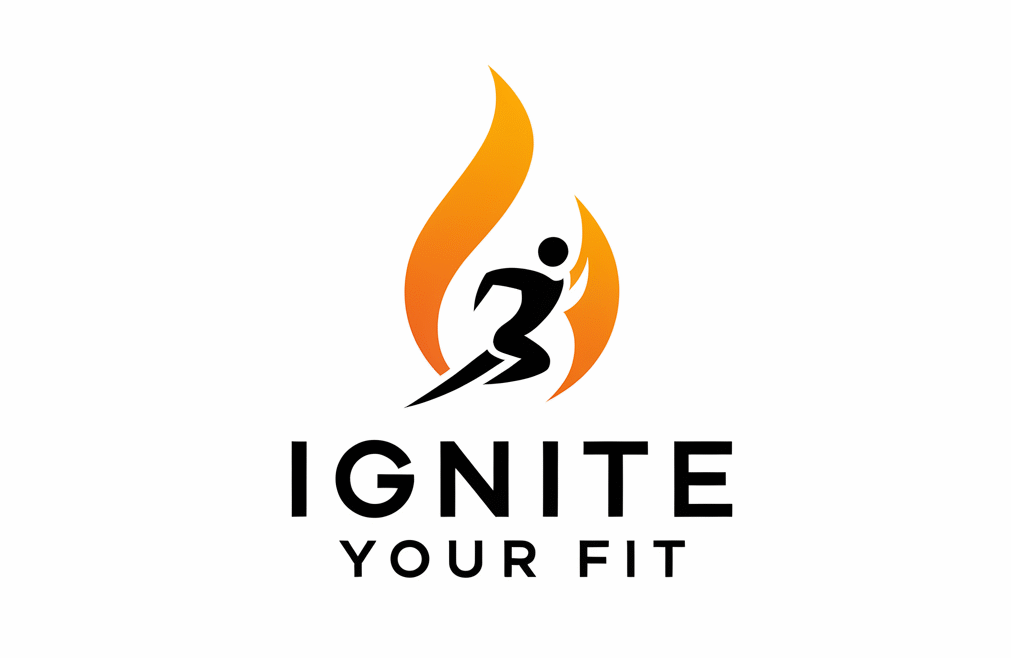 Feeling low on energy as you get older is pretty common, but it doesn’t have to be your new normal. Life seems to get busier in midlife; work, family, and responsibilities can pile up, leaving you feeling sluggish. The upside? It’s never too late to mix things up with fresh fitness routines tailored for this stage of life.
Feeling low on energy as you get older is pretty common, but it doesn’t have to be your new normal. Life seems to get busier in midlife; work, family, and responsibilities can pile up, leaving you feeling sluggish. The upside? It’s never too late to mix things up with fresh fitness routines tailored for this stage of life.
It’s easy to assume that workouts need to be long or intense to be effective, but small changes can make a real difference in how energized you feel. Even if you haven’t exercised in a while, simple routines can help bring back that spark and boost your mood throughout the day. You don’t have to sign up for expensive classes or buy a lot of gear—just a bit of commitment and consistency is enough to see changes.
Below, I’m sharing my favorite midlife fitness routines that are easy to start, don’t require fancy equipment, and work for pretty much any schedule or fitness level. These tips are based on what I’ve tried personally, advice from trainers I trust, and some solid science. Take a look at the ideas below and see which ones could help you feel more energetic right now!
1. Low Impact Cardio for Daily Energy
The idea of running a marathon probably isn’t appealing to most people hitting their forties or fifties. Luckily, low impact cardio is super effective for boosting energy and supporting heart health, especially as our bodies change with age. Even gentle activity can jumpstart your day, making it easier to keep up with family, work, and hobbies.
Activities like brisk walking, cycling, swimming, or using an elliptical machine give you all the perks of cardio without putting extra strain on your joints. Personally, I like to mix things up with fast-paced walks in my neighborhood or hop on a bike when the weather’s nice. Sometimes, just dancing around your living room to your favorite playlist counts as low impact cardio!
How to Make It Work:
- Start with 10 to 20 minutes, three to five times a week. Add a couple of minutes each session if you feel good.
- Choose routes or activities you actually enjoy so you want to stick with them. Explore a new park, walk with your dog, or join a casual walking group for company and accountability.
- Safe surfaces, good shoes, and gentle stretching before and after can help keep your joints happy.
Getting moving even for a short time each day really does help keep fatigue at bay and can help you sleep better at night.
2. Strength Training for Everyday Vitality
Muscle loss creeps up naturally with age, but resistance exercises help slow that down and even build new strength. This doesn’t mean you need to lift heavy barbells at the gym. Body weight exercises at home or a set of dumbbells tucked behind the couch work great too. You’ll notice carrying groceries gets easier and stairs don’t wear you out as much.
I like to rotate between squats, lunges, pushups (on my knees when I need to), and resistance band exercises. These moves target the big muscle groups that are key for daily tasks; think lifting groceries, climbing stairs, or keeping your balance. Progressive strength training even keeps your metabolism humming and builds confidence in what your body can do.
Strength Routine Tips:
- Try two or three full body sessions per week. Fifteen to thirty minutes is plenty to start.
- Keep your form steady and focus on controlled, slow movements.
- Look for online videos or apps if you want guidance or extra motivation. There are programs designed just for midlife bodies, focusing on gradual progress without risking injury.
Building even a little muscle helps rev your metabolism, supports bone health, and leaves you feeling stronger for whatever life throws your way. Over time, you’ll spot improvements in things like balance and endurance, too.
3. Flexibility and Mobility for Lasting Comfort
Flexibility tends to decrease if you’re sitting a lot, which can make you feel stiff or achy. Including flexibility and mobility work helps you stay limber, reduces the risk of injury, and even improves posture. It can also ease up the soreness after more intense workouts and help relieve everyday tension in your neck and shoulders.
Gentle stretching, yoga, and mobility drills are easy to do at home, and I’ve noticed my energy levels stay up when I add them to my routine. Yoga apps and YouTube channels have tons of beginner-friendly classes that take 10 to 30 minutes and really help ease tight hips, shoulders, and backs. Try focusing on breathing deeply as you stretch to help your body relax even more.
Getting Started with Flexibility:
- Start with a five minute routine after cardio or strength sessions. If your muscles are warm, you’ll get more out of the stretches.
- Focus on stretching the hips, hamstrings, chest, and shoulders.
- Check out beginner yoga classes or basic mobility flows for inspiration. Many beginner yoga videos include modifications and tips for those with stiff joints or limitations.
It’s a small investment of time with a big payoff in how you feel day to day, and it can even enhance your sleep quality.
4. Balance Exercises That Keep You Moving
As we get older, maintaining steady balance becomes really important for confidence and avoiding falls. Simple balance exercises don’t take long, and they make a noticeable difference in how stable you feel when walking, reaching, or climbing stairs. Good balance can help you recover from a misstep and save you from trips or tumbles.
Some basic balance drills I like include standing on one foot for 30 seconds at a time or doing a few yoga poses like tree pose or warrior three. Tai chi is also great for building both balance and calmness if you’re up for trying something new. If balancing on one foot is tough at first, start near a sturdy chair or countertop for support.
- Add quick balance drills to your morning routine or at the end of a workout.
- Use a chair or wall nearby for extra support if you’re just starting out. Gradually challenge yourself by closing your eyes or standing on a softer surface as you improve.
These moves help keep your coordination sharp and can make you more confident tackling daily tasks.
5. Quick HIIT Workouts for a Fun Energy Boost
High Intensity Interval Training (HIIT) might sound intimidating, but you can tailor it to any fitness level. Short bursts of activity with little breaks in between help wake you up and build stamina, even if you only have a few minutes. The best part? You don’t need a gym—just some open space, comfortable clothing, and maybe a timer on your phone.
For midlife fitness, I stick with gentler HIIT, like alternating quick marching or light jogging in place with short rest periods. Even just six or eight minutes of this can leave you feeling refreshed and clear-headed. Studies show HIIT can pump up your cardiovascular health and even sharpen your focus for the rest of the day.
How to Build a Simple HIIT Routine:
- Pick two or three simple moves, like brisk marching, step ups, or air squats.
- Do each move at a comfortable pace for 30 seconds, then rest for 30 seconds. Repeat for three to six rounds.
- Adjust the work and rest times based on how you feel. Remember, it’s about quality of effort, not speed.
Short and sweet HIIT sessions are my go to when I need a fast pick me up and don’t want to commit to a long workout.
6. Prioritize Recovery: Sleep and Rest Days Matter
One thing I learned the hard way is that recovery is just as important as the workouts themselves. As you get older, your body needs extra time to recover and rebuild. That means scheduling rest days into your week, grabbing good sleep, and being gentle with yourself if you feel worn down. Rest is not a weakness; it is a strategy for consistency.
Mix active recovery such as easy walks or light stretching into your routine instead of pushing through fatigue. I keep a water bottle by my bed and try for seven to eight hours of sleep, since being hydrated and rested really helps energy levels bounce back faster. Letting yourself rest also keeps injuries at bay and makes it easier to stick with your new habits for the long haul.
7. Stay Consistent with Real Life Tips
Making new routines stick can be tough, especially with a busy schedule. I’ve found that consistency beats intensity any day. Start small, find activities you enjoy, and don’t worry about missing a day here or there. Progress stacks up over weeks and months, not days, so aim for regular effort rather than perfection.
- Schedule your workouts in your calendar so they become a priority, not an afterthought.
- Try working out with a friend or family member for extra accountability. Social support goes a long way.
- Celebrate small wins, whether it’s an extra workout or trying a new class. Keep a journal to note how you feel after each session.
It’s all about building momentum, not hitting perfection every time. As your habits take root, you may even stumble upon new activities you want to try.
Wrapping Up
Reigniting your energy in midlife isn’t about pushing harder. It’s about finding routines that fit where you are now and help you thrive. Cardio, strength, flexibility, balance, and recovery each play a part. Mix and match, experiment, and listen to what works best for you. The real win comes from making movement a regular part of your day and enjoying the boost it brings to your energy and confidence. If you’re ready to get started, pick one of the routines above and give it a try this week; you’ll probably feel the difference sooner than you expect!
Remember, this stage of life can be full of excitement and discovery if you keep an open mind and stay consistent. Building healthier habits today paves the way for a happier, more energized tomorrow. Here’s to moving forward with confidence and renewed energy at every age!
